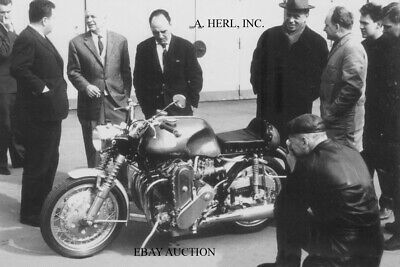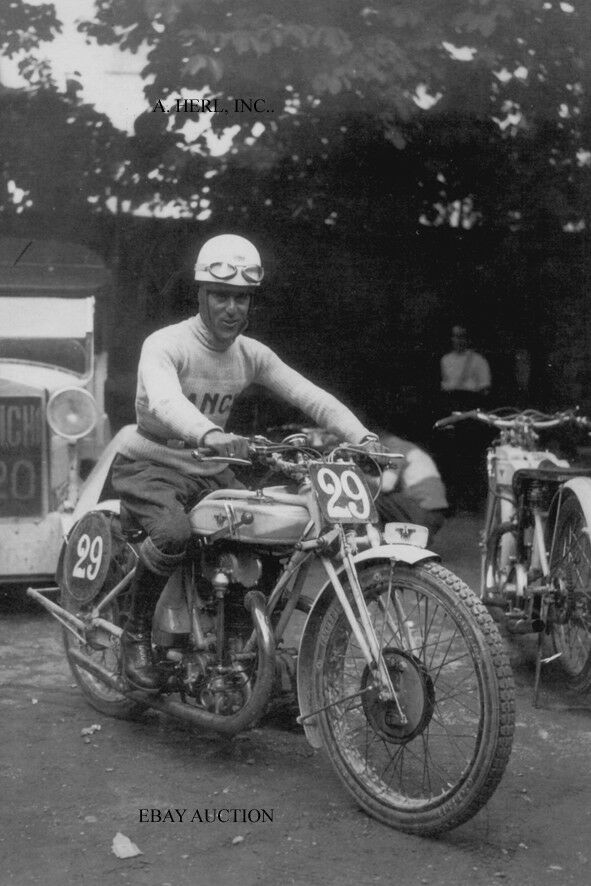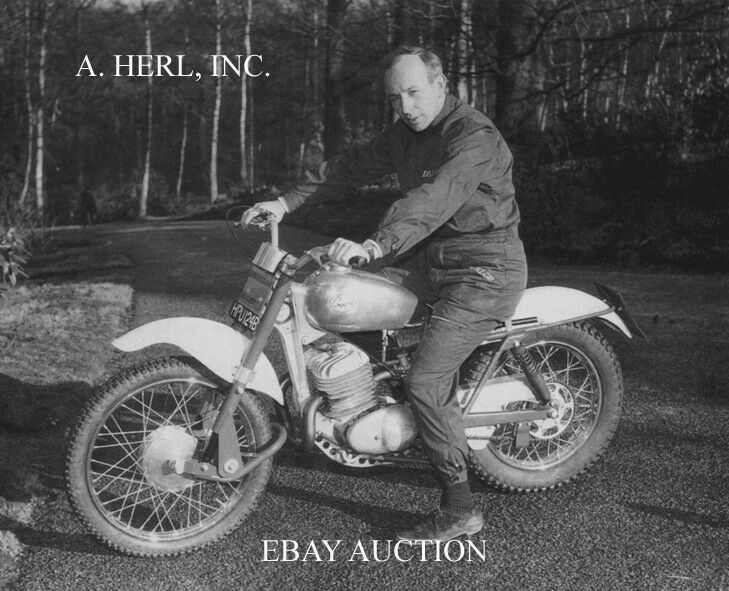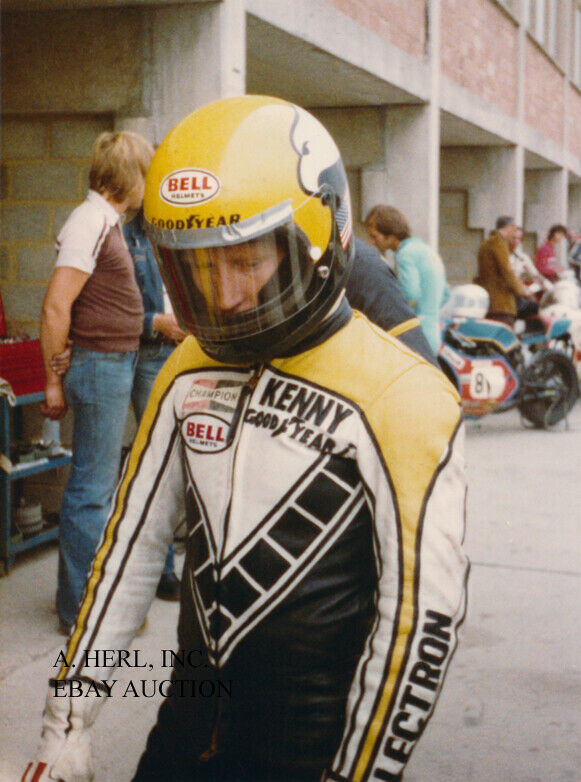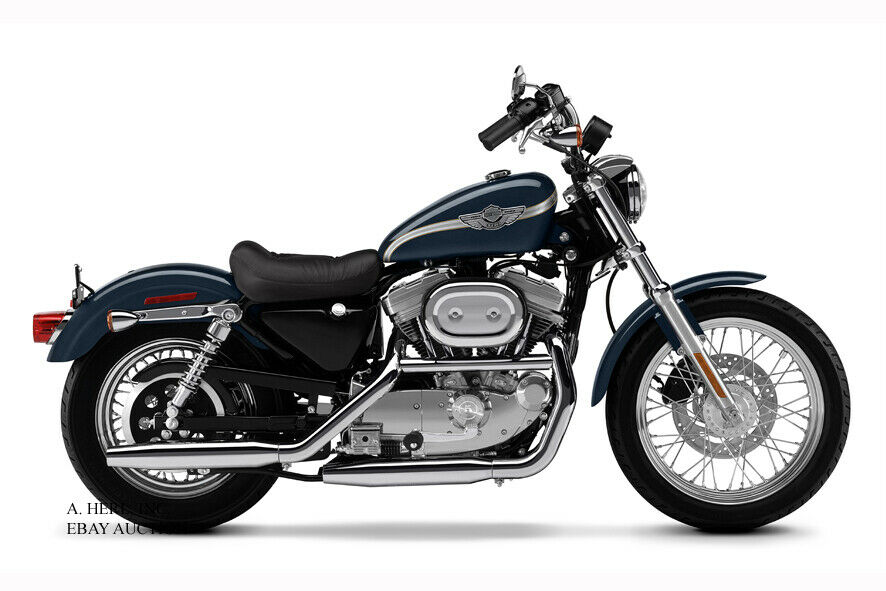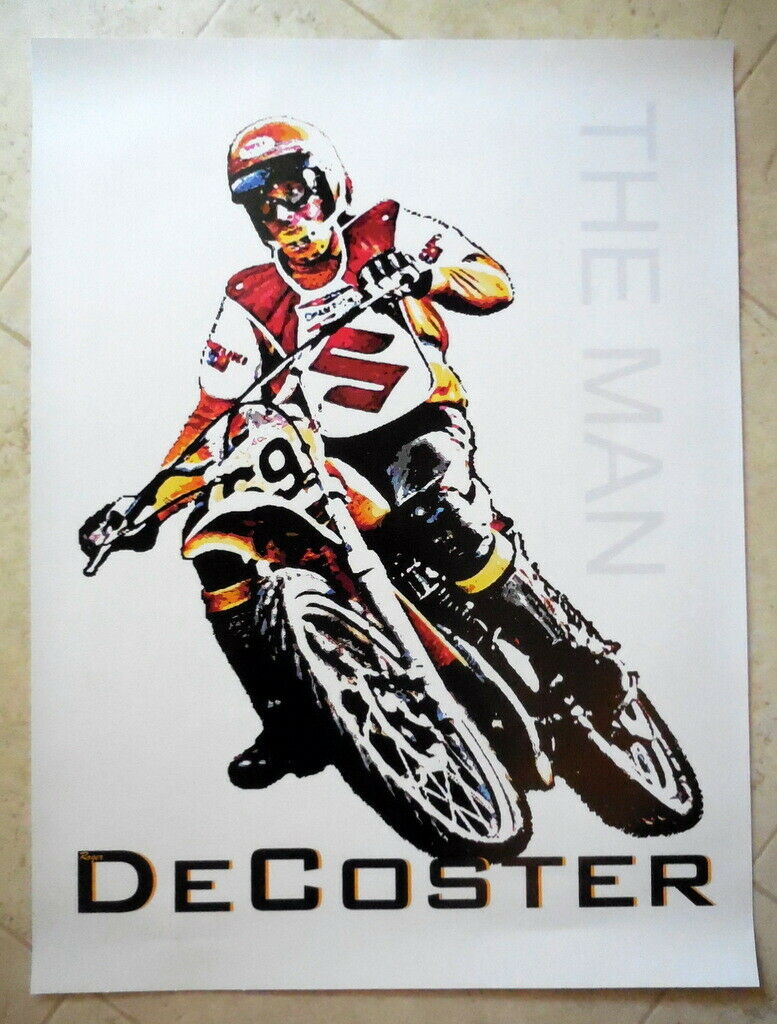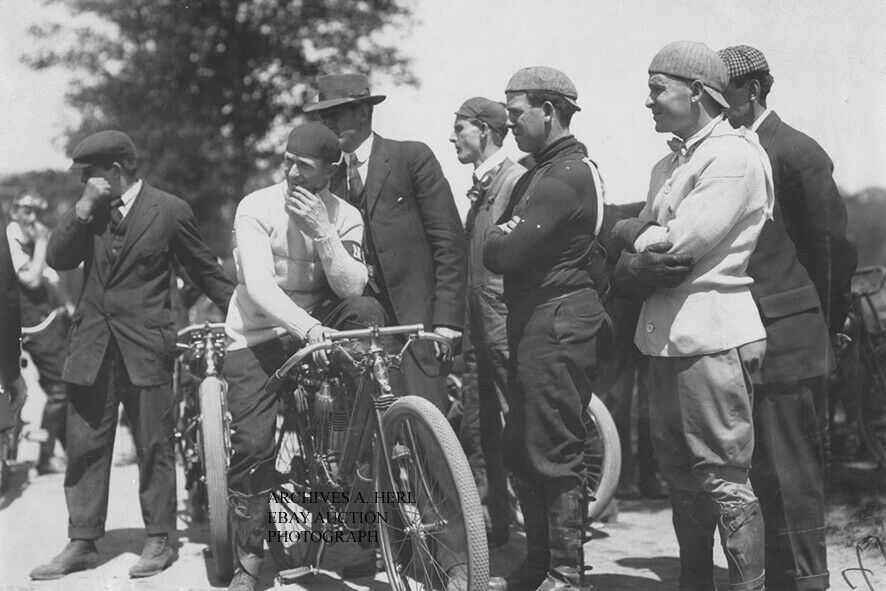-40%
Munch Mammut 4 TTS Mammoth introduction - spring 1966 - motorcycle photo
$ 5.14
- Description
- Size Guide
Description
A superb and rare photo of the introduction of theMunch 4 TTS Mammut - Clymer Munch 4 TTS Mammoth
in the spring of
1966
. Shown is a prototype, with an open, non enclosed, rear chain and a four-into-four exhaust system.
It is a great historic image of one of the most special motorcycles of all time!
Münch Motorrad
was founded in 1956 by engineer and designer Friedel Münch in
Frankfurt
,
Germany
. Münch, (aka Friedel Müench) became known for building some of the most interesting and unusual limited-production motorcycles ever created, which were built at a factory which he purchased from defunct Horex Motorräder. Horex was founded in 1923 by Fritz Kleemann in
Bad Homburg
vor der Höhe, near
Frankfurt
. The company was a spinoff of the Rex glassware company in
Bad Homburg
, leading to the name Horex (Ho)mburg (Rex). The first Horex motorcycles used single-cylinder (einzylinder) engines made by Columbus Motorenbau AG in Oberursel, near
Frankfurt
. In 1925, Horex and Columbus merged, and the company began to build a several einzylinder models from 250 to 600 ccs. By the late 1930s, Horex began building parallel twin-cylinder engines for their 600 cc model "S6" and 800 cc "S8." After the conclusion of WWII, Horex resumed production with the single-cylinder 350 cc "SB 35 Regina." By the early 1950s, Horex reintroduced the parallel-twin, in the form of the 500 cc
OHC
"Imperator" (Emperor) road bike, and 500cc
OHC
twin racer. Horex became known for their racing motorcycles, such as the 500 cc Horex S5 racer which achieved an average lap time of 147.2 km/h at the 1948 Hockenheimring Baden-Württemberg Grand Pix. By the mid 1950s, Horex was facing financial difficulties due to low sales numbers, and the company was broken up by its parent company Daimler-Benz. In 1956, Friedel Münch purchased one of the Horex Motorrädern (Motorcycle) factories from Horex-Fahrzeugbau AG. The first Friedel Münch production motorcycles were the 500er Münch Straßen (Münch-Road) Horex, and the 500er Münch-Renn (Münch-Racing) Horex, which was also known as the "Münch-Spezial" (Münch Special). In 1964, Münch also invented a 250 mm, ventilated 'duplex' front brake called the "Münch-Rennbremse" (Münch-Racing Brake) which had the stopping power of the soon-to-be-introduced disc brake. In the late 1960s, while the Japanese were just beginning to contemplate entering the field of large-displacement multi-cylinder street-bikes (vierzylinder strassenbikes), Münch was already building a four-cylinder monster that would go down in history as one of the bulkiest and most powerful motorcycles of the time. In 1967, Friedel Münch produced his behemoth under the name 'Munch 4TTS.' The 4TTS, which was marketed in the
United States
as the "Clymer Munch Mammoth IV" used a modified 4-cylinder NSU 1200 TT from a NSU Prinz automobile, giving the 4TTS the pet nickname of "automotorcycle." The stock NSU 1200 TT engine - from an NSU Prinz - was capable of producing 65 bhp at 5500 rpm. Münch added faster camshafts, ported and polished intakes, and raised the compression ratio from 9.5:1 to 10.5:1. These modifications produced 88 bhp at 6500 rpm, and a 4.5 second, 0 to 100 km acceleration time. The name "Mammoth," or "Mammut" in German was added to the 4TTS for its "giant" size and bulk. The Mammut 4TTS was offered in a normally aspirated version with twin Webber carbs, and a fuel-injected version. Final drive was via a fully-encased oil-bath chain. Another distinguishing feature of the Münch-4 was the twin Elektronguss headlamps from an NSU Prinz. Friedel Münch also manufactured a hybrid "Indian Scout" in 1968, using a Indian 1200 twin engine. In 1973, Friedel's company went bankrupt, but was reborn in 1976 under the name Horex-Motorrad GmbH. By 1997, Münch was already conceiving new multi-cylinder behemoths such as the "Polo Bike" with a VW engine. His new cast and machined "Gussrad" alloy wheels with their "spoke-look" were works of art in themselves. Another iteration from this period was the 125 hp Münch TTS 4-E 1300 Turbo, using a Kühnle, Kopp & Kausch (KKK) turbocharger, and the TI 1400 Horex Turbo which produced 143 hp. In 1987, the "Titan" series was introduced, starting with the Titan-1600 (1600cc), the Titan-1800 (1800cc) which was built in 1988, and the Titan 2000 (2000cc) which was introduced in 1989. The rights to the "Mammut" name were now owned by Thomas Petsch, a mechanical engineer in Würzburg, who in 1997 partnered with Friedel Münch to reincarnate the Münch 4TTS as the "Mammut 2000." This curious, naked "superbike" had a 1998cc turbocharged four-cylinder motor that produced 260 bhp, with 218 ft lb of torque, and used a five-speed transmission. Sadly only fifteen Mammut 2000s were ever built, and production ceased in 2002.
This is a very rare
non period
image that reflects a wonderful era of Munch
‘
s rich history in a wonderful way. This is your rare chance to own this photo, therefore it is printed in a nice large format of ca. 8" x 12" (ca. 20 cm x 30 cm).
Shipping costs will only be $ 7.00 regardless of how many photos you buy. For 5 or more photos, shipping is free!
(Note: A. Herl, Inc. does not appear on photo, for ebay purposes only)
No copyright expressed or implied. Sold as collectable item only. We are clearing out our archives that we have gathered from various sources.
All items always sent well protected in PVC clear files
and board backed envelopes.
We have photographs that came from professional collections and/or were bought from the original photographer or press studio! They are all of professional and excellent quality.
After many decades of professionally collecting photographs and posters we are clearing out our archives. They make the perfect gift and are perfectly suited for framing. They will look gorgeous unframed and will be a true asset nicely framed with a border. They are a gorgeous and great asset in every home, workshop, workplace, restaurant, bar or club!
First come - first served. And you can always contact us for your requests. Please ask any questions before the auction ends.
